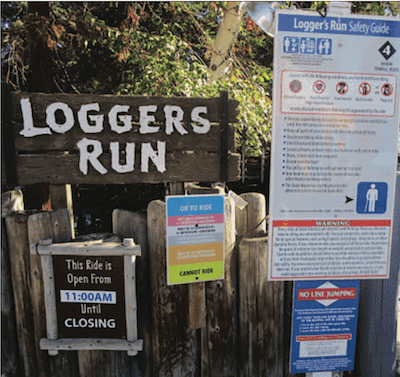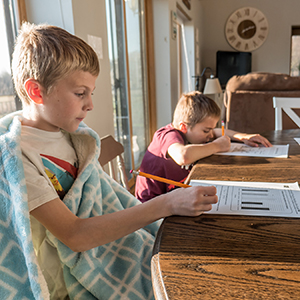Dangers Imagined and Real: Always Amused February 2019

By Erik Chalhoub
You’ve loaded the family in the car, driven a few hours, and you’ve gotten through the main gate. All that built-up excitement and anticipation upon entering a theme park can be overwhelming, especially for younger children: which ride do you hit first? What time do the shows start? Where should we get lunch?
But, you should be focusing on one thing above all else: safety first. Sorry to be a buzzkill.
From all my years visiting theme parks, I’ve seen some crazy things, all of which were the fault of the guest, not the park. I’ve seen kids dive into fountains to retrieve lost items, adults trying to climb over fences clearly marked “Do Not Enter” just to get that one photo, and riders unbuckling seatbelts mid-ride.

We’ve also heard the stories of park guests losing limbs (or their lives) because they refused to follow the rules.
The rules are there for a reason: to ensure you have a fun, and safe, day.
Thanks to the sophisticated safety measures in place at theme parks (excluding carnivals, but that is another story), a visit to a theme park is one of the safest activities you can enjoy with your family.
According to the International Association of Amusement Parks and Attractions (IAAPA)’s 2017 Ride Incident Survey Report, about 370 million guests enjoyed 1.7 billion rides at 400 theme parks in the United States. The chance of being seriously injured on a ride is 1 in 18 million. That is considerably less of a chance than the freak accident of being struck by lightning, which is 1 in 775,000, according to the National Weather Service.
Here are some safety tips listed by the IAAPA, along with some of my observations:
- Obey listed age, height, weight and health restrictions — Every ride has a large, visible sign posted at its entrance, advising potential riders of its intensity level (typically on a 1 to 5 scale). Only you know your limitations; the park does not. All rides also have a height limit, and most allow small children to measure their height at the ride’s entrance before entering the line to see if they are tall enough. (On a side note, I still remember when I just barely missed the height requirement to ride Indiana Jones Adventure at Disneyland during its opening year in 1995. It was devastating).
- Observe all posted ride safety rules, and follow all verbal instructions given by ride operators or provided by recorded announcements — Do not sit or stand on the handrails, buckle your seatbelt, and stay out of employees-only areas. Ride operators will shut the ride down mid-cycle if you ignore their warnings. Don’t be that person that ruins the ride for everyone else.
- Keep hands, arms, legs and feet inside the ride at all times — While all rides are designed to have enough room around them to prevent riders from hitting their hands or feet on their surroundings, don’t risk it.
- Secure all loose articles, including wallets, change, sunglasses, cell phones and hats — I’ve seen so many cell phones come crashing down to the pavement. I’ve also caught a few hats mid-ride. While traveling at high speeds, loose articles can become projectiles and cause serious injuries to not only your fellow riders, but for those waiting in line. Also, never try to film an on-ride video with your phone or GoPro camera. It can get you ejected from the park.
- Never force anyone, especially children, to ride attractions they don’t want to ride — I’ve also witnessed so many parents try to force their scared and hysterical children on rides they are too terrified to ride. Not only does this make them seem like bad parents, but it also holds up the line for other guests as they witness the cruel scene.
- If you see any unsafe behavior or condition on a ride, report it to a supervisor or manager immediately.
Like anything else, you can get the most enjoyment at a theme park by practicing safety. The next time you visit a park, keep these tips in mind, and if you are traveling with younger children, make sure they are aware of them as well.







